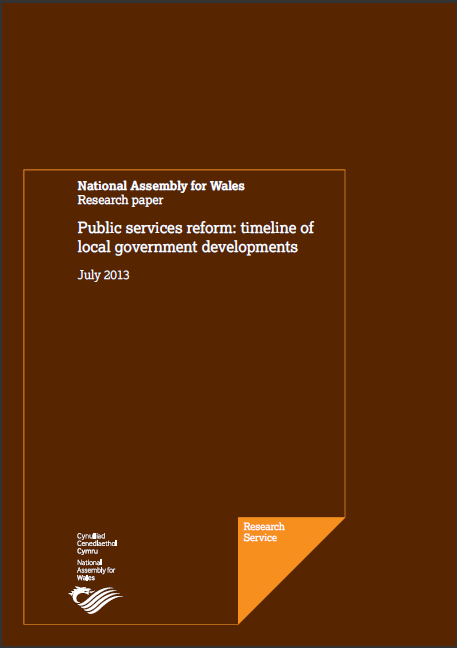Ever since the current local government structure was established in 1996, there has been debate amongst politicians and commentators as to whether that framework is working effectively.
In March 2011, two notable developments took place that focused minds on this issue. First, the Local Government (Wales) Measure 2011 was passed by the National Assembly, giving Welsh Ministers unprecedented powers to amalgamate two or three local authority areas and to issue statutory guidance on collaboration.
Soon after, the Welsh Government published the ‘Simpson review’ of local government: Local, Regional, National: What services are best delivered where? This report made 21 recommendations on how local government services could best be delivered in Wales in the forthcoming years, with a heavy focus on collaboration between councils. It tied in with similar but separate reviews that had been undertaken on behalf of the We lsh Government into the delivery of education and social services in Wales.
lsh Government into the delivery of education and social services in Wales.
The Simpson review eventually led to the signing of the Compact for Change between the Welsh Government and Welsh local government (the ‘Simpson Compact’) in December 2011. This was intended to provide a route map for new ways of organising public services on a national, regional and sub-regional level. The aim was to formalise a partnership approach across a range of council services, and to standardise collaboration in order to improve delivery and outcomes.
Carl Sargeant AM, the Minister for Local Government and Communities until March 2013, emphasised throughout this period that his focus was on delivery. Reorganisation of structures, he said, was not on his agenda.
However, the announcement by the First Minister on 18 April 2013 that he was establishing a Commission on Public Service Governance and Delivery has again stirred debate on this matter. According to the First Minister, talk about reorganisation was ‘premature’. He said that ‘no responsible government would incur the cost and disruption of any major structural reforms without a clear, coherent and compelling case for doing so’. Nevertheless, In Plenary on 30 April 2013, he did acknowledge that this was now a possibility:
I do not believe that there is anyone—or there may be one or two in the Chamber—who believes that having 22 local authorities, with their present boundaries, is right for delivering local government services across Wales. Therefore, the issue of local government reorganisation is something that this commission can consider, and we look forward to any conclusions that it may come to as a result of that. We have had several reviews in the past—Beecham, for example, being one of them—where collaboration has been suggested as the way forward. It has had, to say the least, mixed results. Therefore, fundamental reorganisation may—and I do not wish to pre-empt what the commission is going to do or say—be the way forward.
With the debate therefore continuing, this research paper Public services reform: timeline of local government developments provides a timeline of the main developments in public services reform policy that have impacted on Welsh local government in recent years.
Article by Rhys Iorwerth, National Assembly for Wales Research Service.






